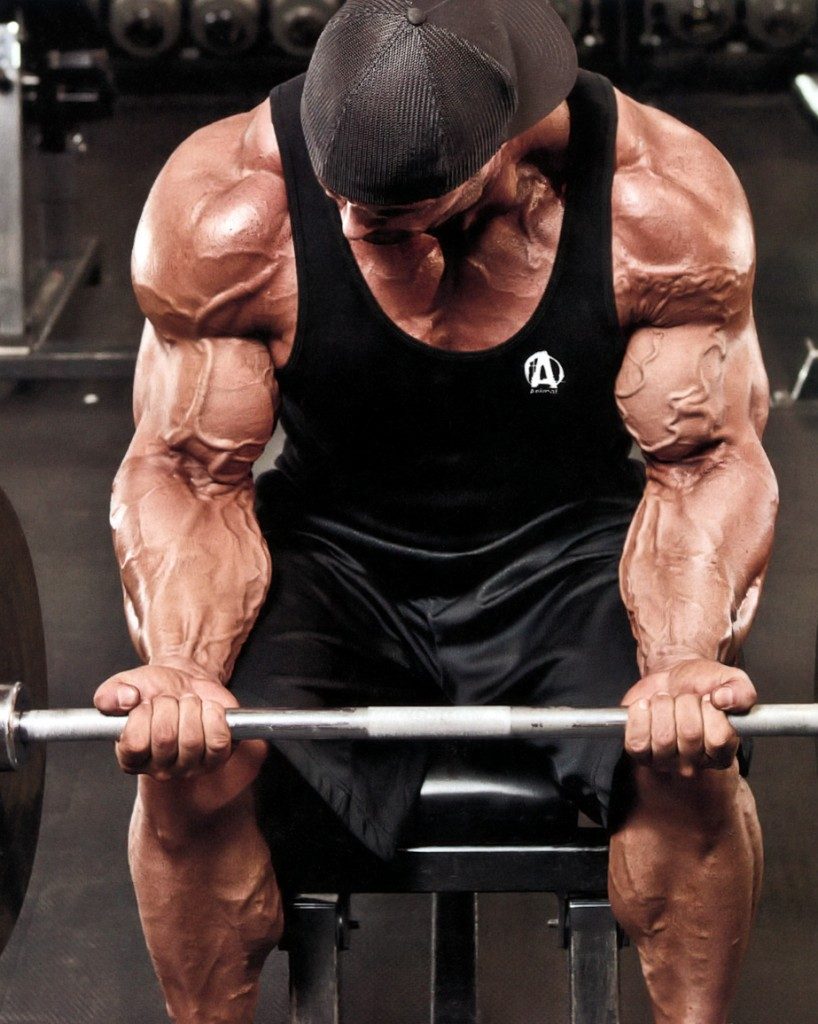When you first begin bodybuilding training, there is a good chance you aren’t going to take forearm training all that seriously. After all, they aren’t listed as target muscle groups in nearly all the articles we read in magazines. In the beginning, we usually employ a group of compound lifts which deliver stimulation all over the body. The forearms grow at a rate determined by genetics, rest, diet and stimulation through secondary training. Every time you complete a barbell row, biceps curl, or lat pull down, the forearms are targeted. In the beginning, they grow as a result. However, there are a few reasons why direct and sustained training designed to isolate the forearms is a good idea. Here are a few of them!
Aesthetics
There is nothing more comical to see upon a bodybuilding stage than seeing athletes displaying the “reverse Popeye syndrome”. These men have amazing and well-developed biceps, but their forearms are small and underdeveloped. While this does allow the biceps to appear larger in some cases of competitors with sub-par biceps, this intentional lack of possible muscle can and will eventually cost the bodybuilder in the final placings. The forearms need to be as developed as the rest of the muscle groups in the body, and the judges know this better than anyone. If there’s any doubt in your mind at all, ask the judges at your next competition.
Support in major lifts
When you’re training hard and heavy, you are employing many sets of systems to complete each repetition. Your nerves, muscles, skeleton and tendons combine their efforts to move the weight. When completing a movement such as the deadlift, for example, your body uses multiple sets of muscle groups, aside from just the back (the muscle group being targeted). Your biceps and forearms are both called upon to support the lifting of hundreds of pounds. These muscle groups are much smaller than the back, and weaker as well. As a result, they often fail first. By training the biceps and specifically, forearms, with direct and targeted training, one can improve the number of repetitions and weight used in the deadlift. This applies to any and all movements requiring multiple muscle groups. The forearms are often the smallest and weakest muscle group, and fail first. You need to change that through training!
Injury avoidance
The stronger your biceps and back become, the greater workload (heavier weight and more repetitions) they are able to safely and consistently complete. However, heavier weights also contribute to a greater likelihood of sustaining an injury. Tendons and bones cannot be made stronger – one can only lift to make the muscles stronger and take precautions to ensure the muscles groups being trained are properly warmed up. Developing the forearms using resistance weight training helps them to be better prepared for a workload presented to them, and therefore less vulnerable to injury.
The bottom line is that yes, forearms do matter. Train them with the same intensity and focus you use on your ‘showcase’ body parts and you’ll be very happy with the results!

